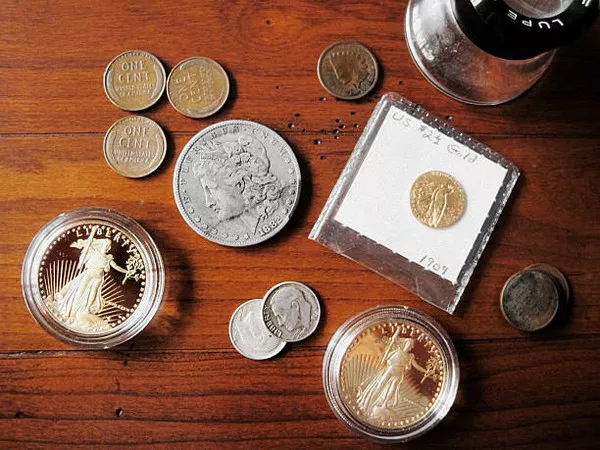Gold, often referred to as the “king of metals,” has been a symbol of wealth and a store of value for centuries. In the world of financial markets, gold is a popular commodity for trading and investment. However, to maximize your success as a gold trader, it’s crucial to understand the best times to engage in this market. Timing plays a significant role in gold trading, and in this article, we will explore the optimal periods for trading gold.
The Global Gold Market
Before delving into the best times for gold trading, it’s essential to comprehend the global gold market‘s dynamics. Gold is traded on various global exchanges, with the London Bullion Market Association (LBMA) and the COMEX division of the New York Mercantile Exchange (NYMEX) being two of the most prominent. These exchanges facilitate the trading of gold futures and options contracts, which allows investors and traders to speculate on the price of gold without taking physical possession of the metal.
The gold market is unique in that it operates 24 hours a day, five days a week. It’s influenced by a multitude of factors, including economic data, geopolitical events, currency fluctuations, and market sentiment. The interplay of these factors makes gold trading both challenging and potentially rewarding.
Understanding Gold Price Drivers
To determine the best times for gold trading, it’s essential to grasp the key drivers of gold prices. Several factors can influence the price of gold, including:
Global Economic Conditions: Gold is often seen as a safe-haven asset, meaning its price tends to rise during times of economic uncertainty. Consequently, economic events, such as recessions, inflation, and political instability, can have a significant impact on gold prices.
Currency Movements: The relationship between gold and the U.S. dollar is particularly strong. As the value of the dollar decreases, the price of gold typically rises, and vice versa. Understanding currency movements is vital for gold traders.
Geopolitical Events: Geopolitical tensions and crises can drive investors to seek refuge in gold, leading to increased demand and rising prices.
Interest Rates: The opportunity cost of holding gold is affected by interest rates. When interest rates are low, gold becomes more attractive because it doesn’t pay interest or dividends.
Supply and Demand: Basic economics apply to gold as well. Changes in gold production, consumer demand, and central bank policies can influence its price.
Now, let’s explore the best times for gold trading.
Asian Trading Hours (Tokyo and Hong Kong)
The Asian trading session, which includes the opening hours of the Tokyo and Hong Kong markets, often sets the tone for the day’s gold trading. Tokyo and Hong Kong are significant hubs for gold trading due to their geographical proximity to some of the world’s largest gold consumers, including China and India.
The Asian trading hours typically begin around 8:00 AM local time in Tokyo, which is midnight GMT. During this time, market participants in the region respond to overnight developments and economic news from Europe and the United States. As a result, the Asian session can see heightened volatility and price movement, making it an interesting period for gold traders.
London Trading Hours
London is often considered the heart of the global gold market, with the LBMA setting the benchmark for gold prices. The London trading session typically runs from 8:00 AM to 4:00 PM GMT. This session is known for its liquidity and stability, making it attractive to traders looking for a more predictable market environment.
Many key market-moving events, including economic data releases, happen during London trading hours. Therefore, gold traders should keep a close eye on these events to make informed decisions. The overlap of London and Asian trading hours (12:00 PM to 2:00 PM GMT) often results in increased trading activity and can offer good trading opportunities.
New York Trading Hours
The New York trading session, which overlaps with the latter part of the London session, is also significant for gold trading. It typically runs from 8:00 AM to 5:00 PM EST. The COMEX division of the NYMEX is the primary exchange for gold futures and options trading in the United States.
During New York trading hours, market participants react to U.S. economic data releases, Federal Reserve announcements, and geopolitical events that may have occurred overnight. As the world’s largest economy, the United States has a substantial influence on gold prices, making this session crucial for gold traders.
Overlapping Sessions
Some of the best opportunities for gold trading occur during the overlapping sessions. The overlap between the London and New York sessions (approximately 1:00 PM to 4:00 PM GMT) is particularly noteworthy. This period often experiences higher trading volumes, increased liquidity, and more significant price fluctuations, providing traders with ample opportunities.
Conclusion
Gold trading offers numerous opportunities for traders and investors, but timing is critical. The global gold market operates 24 hours a day, allowing for continuous access. Understanding the key drivers of gold prices, as well as the various trading sessions, can help you make informed decisions.
While the Asian session sets the tone for the day’s trading, the London and New York sessions are crucial for reacting to significant economic events and market-moving news. Overlapping sessions can provide enhanced opportunities due to increased trading activity and liquidity.
Keep in mind that trading gold is not without risk, and it’s essential to have a well-thought-out trading strategy, risk management plan, and a good understanding of the market’s dynamics. Additionally, staying informed about economic events and developments worldwide is paramount in the gold market.
By aligning your trading activities with the best times for gold trading and continuously monitoring market conditions, you can position yourself for success in this dynamic and highly influential market.


